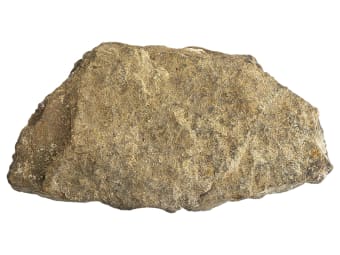A meteorite is a solid piece of debris that originated in outer space, entered Earth's atmosphere, and survived impact with the surface. These fragments are usually from comets or asteroids, or debris from the Moon or Mars. There are several known meteorite impact sites, including Campo Del Cielo, Argentina, the Sikhote Alin Mountains in Primorye, Russia, and the Sahara Desert region of Morocco. Meteorites are separated into three types based on their metal content: iron, stony-iron and stony.
General Information
Meteorite Colors
-
 Black
Black -
 Brown
Brown -
 Gray
Gray -
 Multi-color
Multi-color
Countries of Origin
Tanzania, United Republic Of; Russian Federation; United States of America; Libya; Oman; Saudi Arabia; Sweden; Morocco; Unknown; Mali; China; Algeria; Chile; Western Sahara; Argentina; Japan; Belarus; India; Canada; Namibia; Mexico; South Africa; Antarctica; Australia; Peru; Germany; Greenland; Indonesia
History
The Smithsonian has a 400-year-old dagger thought to once have belonged to Jahangir a Mughal emperor. The legend was that the emperor’s artisans took a meteorite and forged it with iron to make the exceptional blade. In the 1980’s scientists tested the metal and found it had a higher nickel content than terrestrial iron which lends credence to the story. It has also been argued that a dagger found in Tutankhamun's tomb was probably also of meteoric origin.
Care
Normal, gentle handling. Avoid acids and chemicals.
Species/Variety
Stony Meteorite
Chondrites and achondrites are stony meteorites. They are small pebbles and rocks made from the leftover dust and debris from the formation of the solar system or the crust of asteroids, planetary bodies, and or moons.
Iron
Iron meteorites are made up of iron and nickel metals, primarily iron metal with small amounts of nickel and trace heavy metals. They formed from the core of a destroyed planetary body.
Stony-Iron Meteorite
Pallasites and mesosiderites are stony-iron meteorites. They are a mixture of rock and iron; iron-nickel metal and either crystalline olivine (peridot) or a mixture of rock. They formed from the mantle layer of destroyed planetary bodies.




